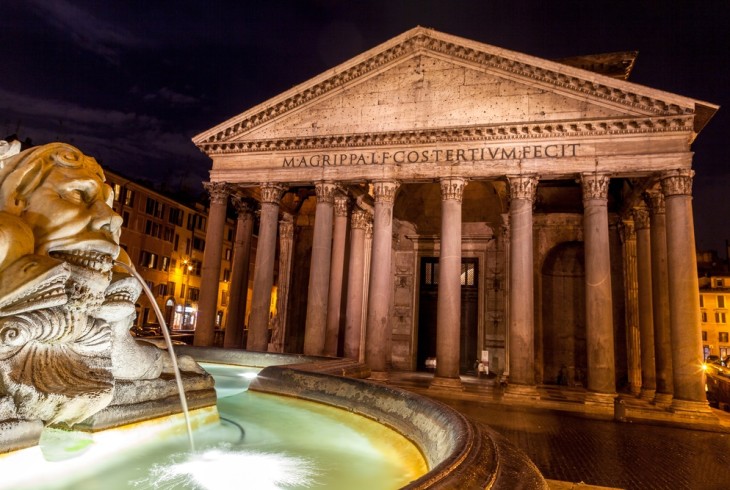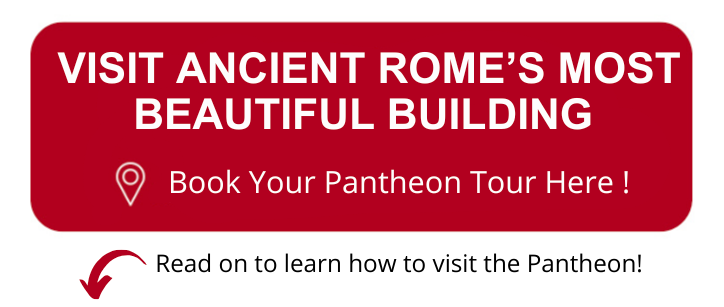Newly Updated January 15th 2025.
Nowhere else in Rome can match the wow factor of the amazing Pantheon. Michelangelo thought the ancient temple to be so perfect that it must have been fashioned by angels rather than men, and his great rival Raphael was so in awe of the building’s perfect symmetry that he chose to be buried here for all eternity.
We’re inclined to agree with their assessment. Getting to walk past the Pantheon every day is one of the great perks that living in Rome has to offer, and every time I pass by I am reminded of the extraordinary heritage that the ancient world has left for us to appreciate here in in the Eternal City.
When you come to Rome you simply have to visit this wonder of the ancient world for yourself. But what’s the best way to visit the Pantheon? Do you need to get a ticket? What should you look out for inside? Find out everything you need to know about the Pantheon with our complete guide below!
What is the Pantheon and why is it important?
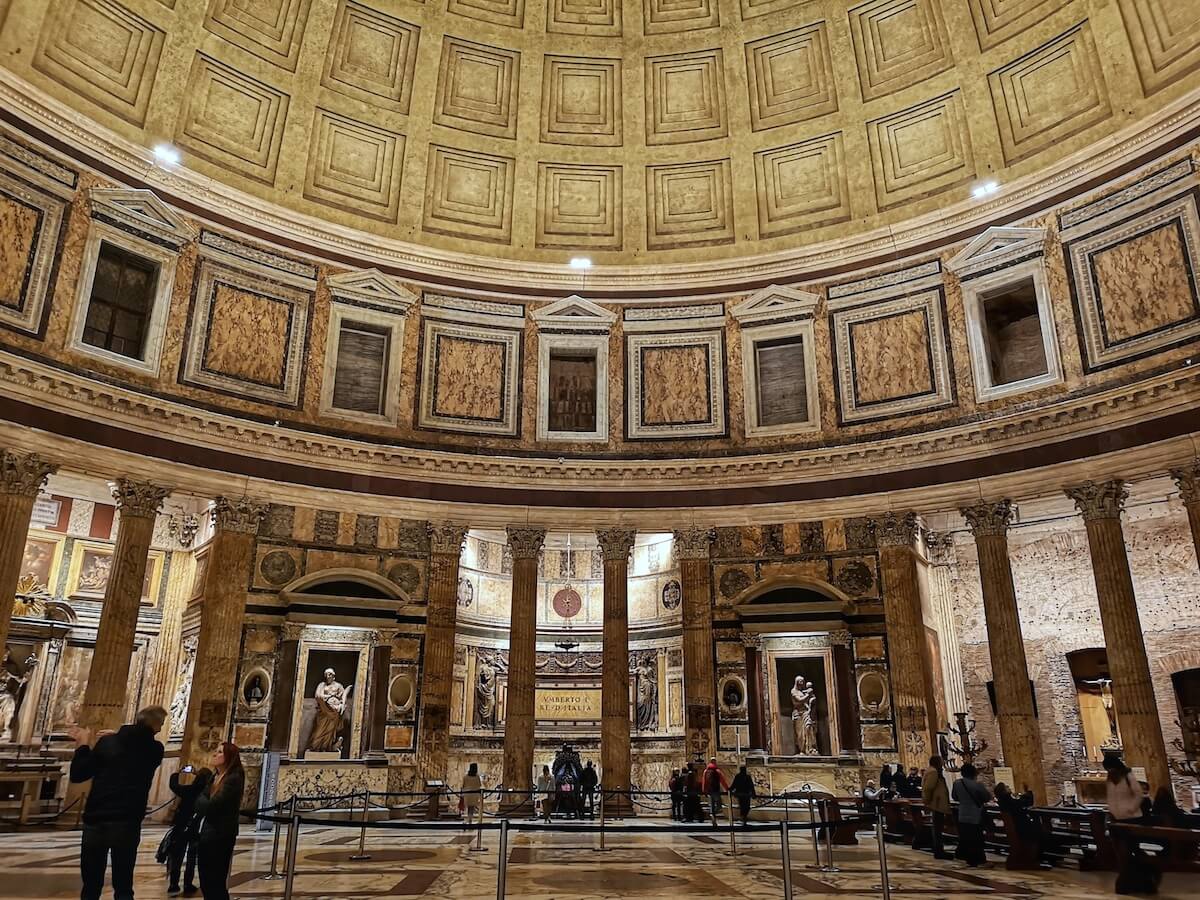
The Pantheon is a temple located in what was the heart of ancient Rome in an area known as the Campo Marzio, or Field of Mars. It’s generally considered that the Pantheon was dedicated to all the Roman gods - Pantheon means ‘all gods’ in Greek, and the building was originally decorated with statues representing the greatest gods of Roman religion. Whether the Pantheon was explicitly dedicated to the entirety of the Roman deities remains uncertain, however.
Whatever its original function, the Pantheon is the best preserved ancient building in Rome to have survived since antiquity, and is renowned for its massive dome. Remarkably, it remains the largest unreinforced concrete dome in the world to this day almost 2,000 years after its construction.
After the fall of the Roman Empire the temple was converted into a Christian church known as the Basilica of St. Mary and the Martyrs. The building’s status as a Christian house of worship saved it from the plunder and neglect that befell so many other ancient Roman structures, and masses are still held inside. It’s a truly awe-inspiring experience stepping into this ancient marvel, and is without question one of Rome’s must-visit sites.
When was the Pantheon built and by whom?

The Pantheon has a long and complicated building history, but we’ll try to keep it brief. The first temple built on the site was commissioned by the consul Marcus Agrippa during the reign of Augustus in around 25 BC.
Agrippa’s temple was burned down in a massive fire that leveled much of central Rome in 80 AD, however, and was rebuilt during the reign of the empire Domitian. This second structure fared little better, and it too was destroyed in a conflagration after being struck by lightning in 110 AD.
Finally, the current structure was commissioned by the Emperor Hadrian sometime around the year 125 AD, possibly designed by the ancient world’s leading architect, Apollodorus of Damascus.
What are the opening times of the Pantheon?
- The Pantheon is open every day from 9 AM to 7 PM, with the last entrance at 6.30 PM. The on-site ticket office closes one hour before the site closes.
- Please note that as the Pantheon is also a working Catholic church, religious celebrations can sometimes cause a temporary suspension of visits.
- The Pantheon is closed on December 25th. At time of writing the monument is open on January 1st from 12:00 pm to 5:00, but check official channels before visiting on New Year's Day to ensure this remains the case.
Do I need to pay to get into the Pantheon?
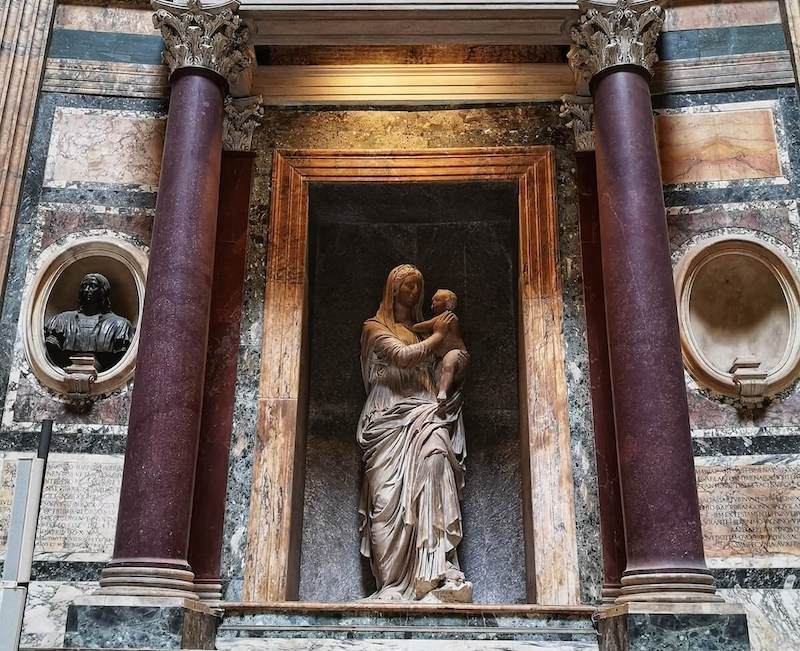
Yes. In Summer 2023 the municipality of Rome introduced a small admission fee to the Pantheon in response to exploding visitor numbers.
- Tickets cost €5 for adults, with €2 reductions for EU citizens aged between 18 and 25 (bring proof).
- Residents of Rome can still enter the Pantheon for free, as can those attending mass in the church.
- Visitors under the age of 18 also get in free, regardless of country of origin.
- People with disabilities and their designated traveling companion can also access the monument for free.
- Entrance is free for everyone on the first Sunday of each month. Free entrance tickets can be obtained directly on site, but expect to queue.
How do I buy tickets for the Pantheon?
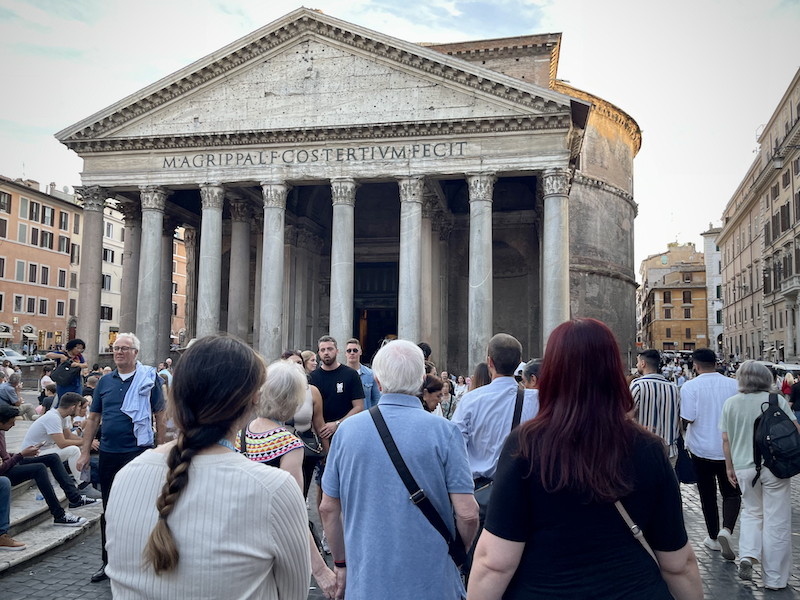
Now that a ticket is required to visit the Pantheon, it can be a bit of a hassle to visit the site on your own, which is why we recommend joining an expert-led tour of the site if you can. Alternatively, you can purchase tickets on site via dedicated kiosks, but you will have to wait in line.
At busy times, tickets can also sell out. During high season it makes more sense to purchase your tickets in advance. You can do this via the Pantheon’s official ticket website here. You’ll need to register an account with your name and email address; afterwards you’ll be able to book a ticket valid for a one-hour time slot on the specific day you choose - make sure to be on time!
Alternatively, if tickets are already sold out or you prefer to get a more in-depth experience at the Pantheon, you can join a group or private tour that includes the ancient temple. For more, see the next section.
Is it worth taking a tour of the Pantheon?
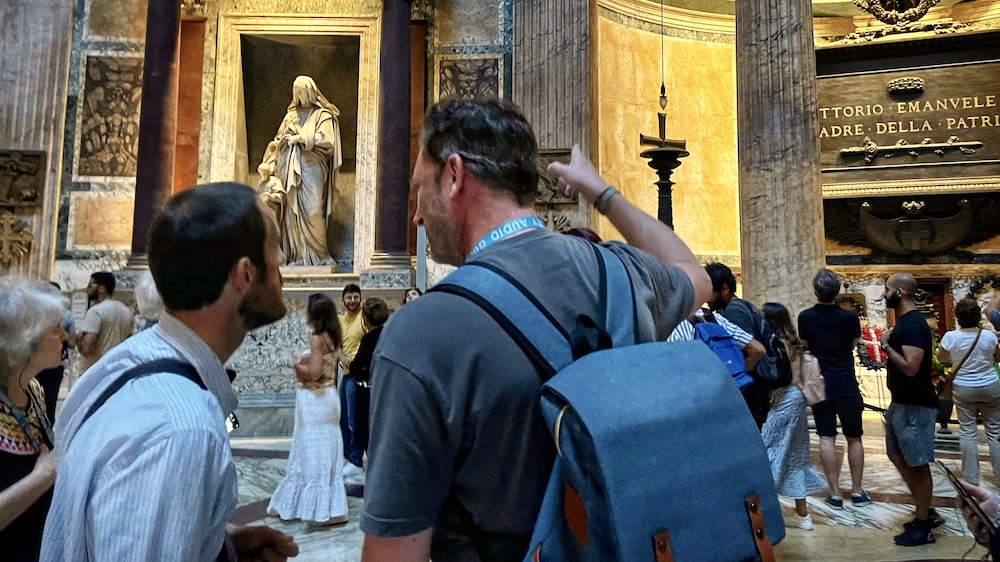
Whilst it’s an amazing experience just entering the Pantheon and gazing up in awe at the sheer scale and beauty of the ancient temple, it’s such a fascinating and complex building that it can be difficult to get the most out of your visit if you don’t have some expert guidance. In addition to not having to worry about tickets and queues, the advantage of joining a tour that includes the Pantheon is that you’ll be sure to get the full story of the temple, and not miss any of the fascinating details hidden here.
Through Eternity’s award-winning Rome at Twilight small group tour visits the Pantheon in the early evening and is a great option if you want to get the full story! Click the panel below to learn more.
How Do I Get To The Pantheon?
The Pantheon is located right in the historic center of Rome, so in most cases it makes sense to walk there if you find yourself already downtown. If you’re coming from further afield, such as from Termini Station, then you can take a bus.
- The 30, 40, 62, 64, 81, 87 and 492 lines all stop at Largo di Torre Argentina, which is a 5-minute walk from the Pantheon.
- If you’d like to take the metro then the nearest stops are Barberini and Spagna on the A line. From either of these stations it’s a lovely 15-20 minute stroll right through the historic center and past some of the city’s greatest landmarks, like the Spanish Steps and the Trevi Fountain.
What is there to see in the Pantheon?
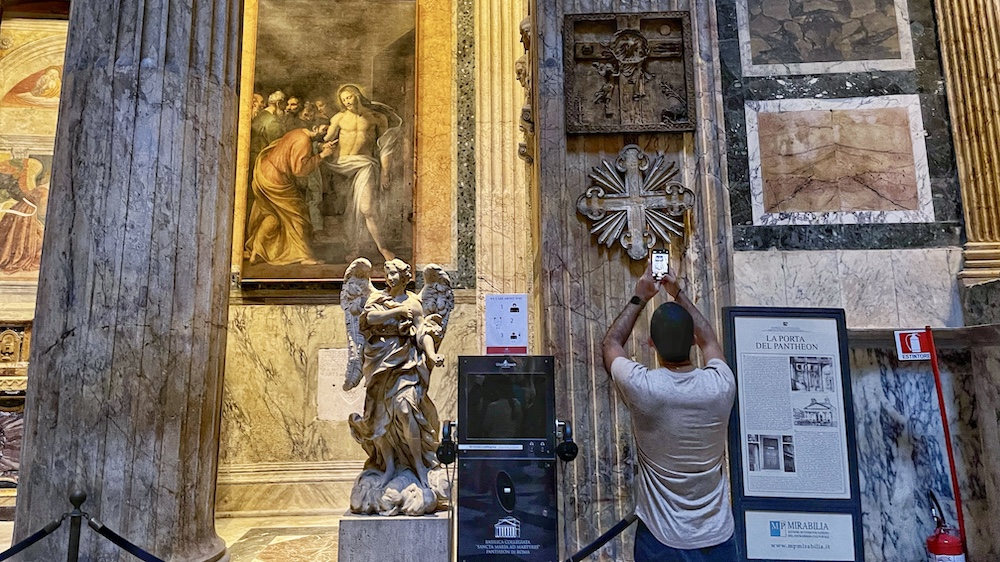
Lots! For starters take a look at the 16 massive columns that hold up the temple’s portico. Amazingly, these 40-foot-tall granite columns were quarried in Africa and brought all the way to Rome in single monoliths.
Then have a gander at the equally gargantuan bronze doors that lead into the temple: these are the oldest bronze doors in the world - the lock itself is also almost 2,000 years old! Despite their enormous weight, the doors are so well-designed that they can be easily pushed open by a single person.
Once inside, gaze up at the oculus opening that pierces the roof: more on that below. The ceiling is studded with a series of hollowed out indents known as coffers. In addition to being very beautiful, the coffers also helped to lighten the dome’s massive weight: it’s estimated that they helped to make the dome 550,000 pounds lighter!
You’ll also want to look out for the tombs dotted about the Pantheon’s interior. Amongst the luminaries buried here are the great painter Raphael, whose dying wish it was for him to be interred in his favorite building. Here too are the first two kings of a united Italy, King Vittorio Emanuele II and King Umberto 1, alongside his wife Queen Margherita of Savoy - the woman who gave her name to the iconic Pizza Margherita.
For a complete guide to what you need to see in the Pantheon, check out our dedicated guide here:
10 Things You Need to See at the Pantheon.
Why is there a hole in the roof?
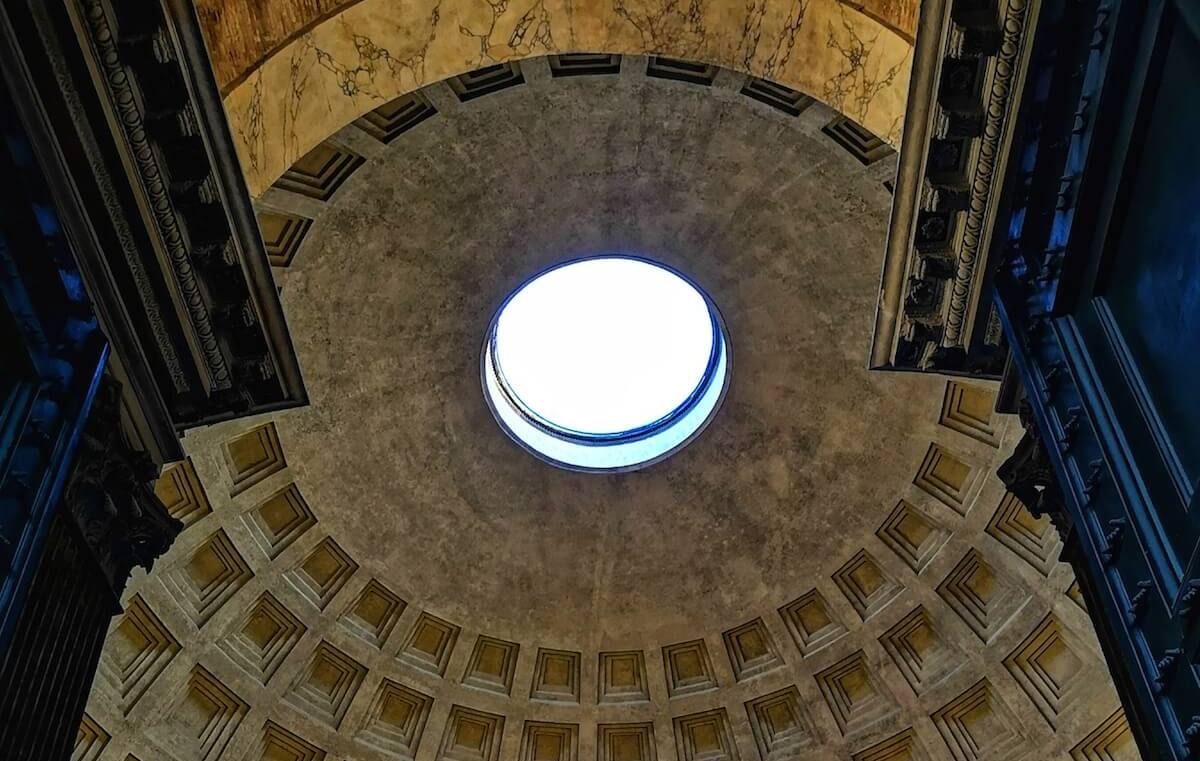
The hole in the roof of the Pantheon is known as the oculus (Latin for eye) and serves several purposes. Firstly, the most important function of the oculus is a structural one: ensuring the structural integrity of the Pantheon’s massive concrete roof was a huge challenge for Rome’s ancient engineers, and the usage of the oculus dramatically reduced the weight that the building had to bear.
Secondly, the oculus provides the principal source of natural light illuminating the Pantheon's interior. As the sun moves across the sky, the quality of light inside the temple changes dramatically, offering intriguing modulations of light and shadow that only adds to the Pantheon’s aura. Despite being open to the elements, the floor of the Pantheon is slightly sloped and features drainage holes to manage rainwater effectively.
It’s also been theorized that the oculus further served as a kind of massive sundial marking the passage of the hours, as well as illuminating the Pantheon’s doorway on the occasion of Rome’s birthday every year – April 21st.
After the fall of the Roman empire, when the engineering knowhow of the ancients had been lost, a pious legend sprang up that claimed the oculus was created by pagan demons fleeing the building when it was converted into a Christian church in the 7th century AD. Read more fascinating facts about the Pantheon here.
MORE GREAT CONTENT FROM THE BLOG:
- What to See at the Pantheon: 10 Higlights Not to Miss
- 9 Things You Need to Know About the Pantheon in Rome
- Who is Buried in the Pantheon?
- The Best New Tours of Italy in 2024
- Where to Take the Best Night Photos in Rome
- Where to Stay in Rome in 2024: Areas and Hotels Guide
For over 20 years, Through Eternity have been organizing itineraries showcasing the best of Rome led by our resident expert guides. If you're planning a visit to the Eternal City this Spring, be sure to get in touch to help plan your perfect trip!
